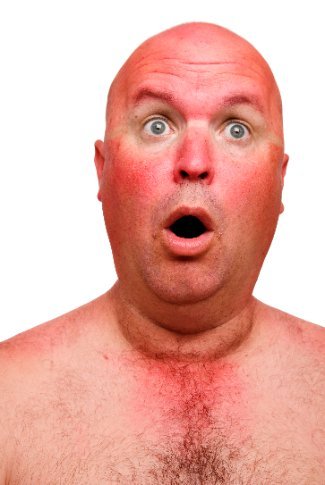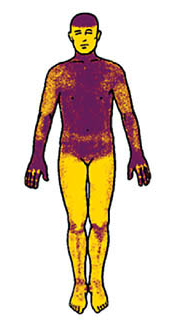For those of you for whom it matters...a very happy Christmas and a very healthy and symptom-free New Year (we can but hope!!)
Feeling sunburnt in winter? It could be small fiber neuropathy.
Posted by April 11, 2013

Nerves are composed of bundles of individual fibers (axons)

Nerve fibers (axons) come in a variety of shapes and sizes. Some are wrapped in insulation (myelinated) others are bare (unmyelinated).

You can see from the figure (above) that small unmyelinated fibers make up the majority of human sensory nerves. These small unmyelinated fibers convey pain and temperature sensitivity.
Small fiber neuropathy
Some diseases, particularly diabetes, preferentially affect these small unmyelinated fibers, leaving the other fibers relatively unaffected, resulting in small fiber neuropathy.
Symptoms of small fiber neuropathy are usually a mixture of numbness (sensory loss) and neuropathic pain.
The pain can be superficial and burning, deep aching, pins-and-needles, electrical shocks, or knife-like stabbing. Innocuous contact (such as with clothing or bedclothes) can become painful like a sunburn.
Small fiber symptoms often worsen at night (when there are fewer distractions) and in the cold.
The symptoms usually begin in the feet, often first affecting the toes and/or soles. As the condition worsens, the symptoms usually spread proximally up on to the legs and ultimately on to the hands, leading to a “glove and stocking” pattern.

In most neuropathies, the ends of longest nerves are affected first (left), leading to a glove and stocking distribution of pain and numbness (right).
Autonomic dysfunction from small fiber neuropathy can cause burning redness in the feet (“erythromelagia”):

Also, loss of innervation to the sweat glands can cause decreased sweating peripherally (where the neuropathy is worse), and lead to increased sweating on the head and trunk:

Sweat test showing decreased sweating in t extremities (yellow) and increased sweating on the head and trunk (purple).
A Diagnostic Challenge!
It is the large myelinated fibers which sub-serve strength and deep tendon reflexes. Furthermore, it it these same large myelinated fibers which are tested during a conventional nerve conduction study.
So the physical signs and electrophysiologic findings we typically rely on to diagnose neuropathy may be absent in small fiber neuropathy.
The most widely available diagnostic test is the punch skin biopsy to quantify epidermal innervation.

Skin biopsies, showing normal epidermal innervation (left) and epidermal denervation in small fiber neuropathy (right).
Managing Small Fiber Neuropathy
So, you know you have sunburn from small fiber neuropathy, now what?
The most important first step is to look for an underlying (treatable) cause, particularly occult diabetes, with blood work that includes a glucose tolerance test. In the case of diabetes, monitoring and controlling the blood glucose, is the most important next step.
Otherwise, treatment is usually limited to symptomatic measures, using drugs like gabapentin, pregabalin and/or duloxetine.
https://mmcneuro.wordpress.com/2013/04/11/feeling-sunburnt-in-winter-it-could-be-small-fiber-neuropathy/
No comments:
Post a Comment
All comments welcome but advertising your own service or product will unfortunately result in your comment not being published.